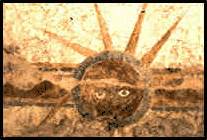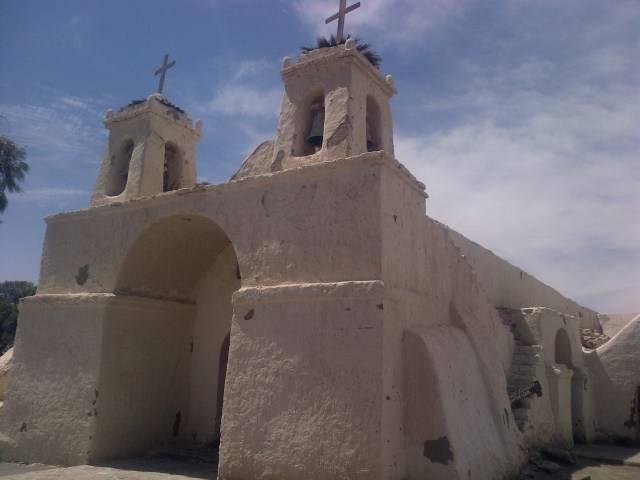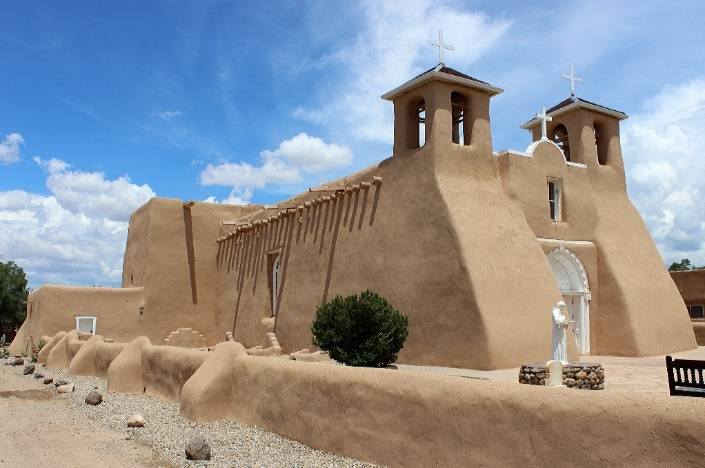Dr. Peter B. Dedek wins Fulbright Award
January 14, 2016
Dr. Peter Dedek was selected for a Fulbright award to Chile. The Fulbright Foreign Scholarship board is the presidentially appointed 12-member Board responsible for supervising the Fulbright Program worldwide and approving selection of all Fulbright recipients. His grant is made possible through funds appropriated annually by the U.S. Congress and, in many cases, by contributions from partner countries and the private sector.
His selection for a Fulbright award is an achievement for which he can be justly proud.
Project Statement Peter B. Dedek
Teaching
Texas State University, where I have taught for eleven years, has a Hispanic enrollment of over 32%. Aware of its geographical and cultural ties with Latin America, Texas State is seeking to augment its relationships, not only with Mexico, but with the entire region. Creating a meaningful connection with the Universidad Mayor in Santiago, Chile, which has agreed to host me should I be accepted as a Fulbright Scholar, would open up opportunities for our students and faculty. Most Texas State University students probably could not point to Chile on a map, yet the country has significant cultural connections and parallels with the American Southwest. Both were once frontiers of the Spanish Empire. Both saw conflict and cultural integration between the Spanish and Native Americans on the fringes of Spanish influence, and both continue to have strong Spanish heritage. By teaching in Chile, I hope to raise awareness of this fascinating Latin American country at Texas State and also bring my knowledge and enthusiasm to the students of the Universidad Mayor, exposing them to American perspectives on design, historic preservation, and architectural history.
The courses I teach at Texas State are varied. At the graduate level, I teach architectural history, the preservation of historic architecture, and courses in cultural history. At the undergraduate level, I teach studios in interior design and lecture courses on the history of design from the Stone Age to the present. I plan to revise the graduate course I teach in American Architectural History to create a new course: The History of United States and Chilean Architecture. The countries share influences. A vast region of United States was settled by the Spanish meaning Chile and the United States have a common tradition of Spanish Colonial architecture, and both countries embraced the neoclassical Beaux-Arts style of architecture in the early twentieth century. Their architectural development differs in that rural architecture in Chile was influenced by different indigenous cultures than those of the United States, and also, Chile continued to embrace neoclassical design for a generation after the United States had adopted modernism as its dominant architectural style. I am also interested in examining how the twentieth-century Spanish colonial revival style developed in Chile. The course will examine both the commonalities and the differences between how architecture developed in the United States and Chile. The study of architectural history lends itself well in the context of linguistic differences because it is so visual in nature.
I have served on a number of thesis committees in history and historic preservation at Texas State University and desire to work with students at the Universidad Mayor who are researching historic architecture or historic conservation. While in Chile, I plan to share my knowledge of American architectural history, historic preservation, and interior design by teaching classes in these subjects and giving special lectures when given the opportunity. I am particularly interested in studying and working with renovation and appropriate architectural rehabilitation within the context of the historic architecture of Chile. My understanding of architectural history is international, but my knowledge of historic preservation is centered in the United States, and I would like to study how historic resources are protected and restored in Chile.
While I have travelled extensively to places as diverse as Peru, Belize, Turkey, and India, sometimes doing volunteer programs and staying for over a month, I have never resided in a foreign country. Living, studying, and teaching in Chile would broaden my perspective as an educator teaching in an American State that was also once at the edge of the Spanish Empire. I am interested in exploring Chile’s strong indigenous heritage as well as its current role in the broader culture of Latin America. My first degree was in writing and literature, and I am fascinated with Chile’s rich literary tradition and desire to experience the culture that spawned brilliant writers such as poet Pablo Neruda and novelist Isobel Allende. Santiago is a very cosmopolitan city, with a rich art scene and a cuisine created from many influences that I am eager to experience. Chile draws me with its varied landscapes, frontier legacy, and blend of cultures: Spanish, Indigenous, pan-European, and Palestinian.
Research
Both Chile and the American southwest developed as frontiers of the Spanish Empire where Spanish power became diluted in a vast wilderness. In most of its Latin American Empire, Spain was able to impose its culture and its architecture, however, Spanish influence diffused and merged with Native American cultures and architectures on its north and southern limits. This is evident in the Pueblos and rural churches and missions of the American Southwest and in the colonial churches of Chile. Both regions have similarly arid climates and rugged terrain, although Chile is more extreme in both regards.
I propose to conduct a qualitative study that examines how the rural Spanish colonial churches in Chile, such as, the Adobe Machuca church near San Pedro de Atacama, and the Inglasia San Francisc in Chiu Chiu, Chile were influenced by the indigenous cultures in the regions where they were built. The study asks how Spanish hegemony interacted and fused with the design traditions of native cultures during the Spanish colonial period in Chile.
My initial research questions ask how thoroughly Spanish influence overlaid or changed native design. How were indigenous building and decorative traditions expressed in Spanish colonial design on its southern frontier? Did Spanish Baroque and Neoclassical influence decrease as one moved away from the urban Spanish stronghold of Santiago and other major cities, and if so, in what ways? How did local climate and materials alter the nature of Spanish design in colonial Chile?
Similar research has examined historic sites in the United States, which I intend to use as models for my work in Chile. Studies such as architectural historian Don Hanlon’s 1992 work “The Spanish Mission Church in Central New Mexico: A Study in Architectural Morphology” looked at how Spanish architectural traditions merged with those of the Native American cultures of the American Southwest. Specifically, he examined how the traditional Native American Kiva influenced the design of Spanish colonial churches in central New Mexico. In 1993, anthropologist Jay D. Edwards conducted a similar study on the fusion of cultures that created the Creole townhouse in New Orleans. Cultural anthropologist, Setha M. Low has argued that the colonial plaza in Mesoamerica and the Caribbean were shaped by a combination of Spanish and indigenous influences. I have done research on the interaction of cultures and how they impact architecture and cultural icons as well. In Hip to The Trip: A Cultural History of route 66, University of New Mexico Press, 2007, I discuss how regional cultural stereotypes of Native Americans and cowboys were exploited and expressed to the mostly white tourists who traveled twentieth-century Route 66 through the Southwest.
Native American influence is evident in Spanish colonial architecture in Texas. For example, in the Spanish Missions of San Antonio built in the 1700s, the overall design of the church buildings was imposed by the Spanish, however, within these buildings, especially Mission Conception, wall paintings survive that display the traditional Native American culture and religion of the workers who painted them, such as the colorful depiction of the sun with a face that harkens back to a deity not found in the Bible. Also, the adobe churches of rural New Mexico with their thick walls, unique interior painting, and protruding vigas embody an amalgamation of Spanish and native Pueblo design. These churches bear a striking similarity to Chilean colonial churches. I hope to identify how indigenous cultures in Chile influenced its historic architecture and decoration.

Sun “Eye of God” Painting, Mission Concepción

Inglasia San Francisco, Chiu Chiu, Chile

San Francisco de Asis Mission Church, Taos, New Mexico
I plan to study and document selected rural churches in Chile to determine if and how they demonstrate influences from Chilean native cultures. This will involve studying mainstream Spanish Colonial architecture to augment the knowledge I already possess. It will also require investigating indigenous Chilean cultures and their material culture and necessitate careful physical examination and visual recording of the selected churches. The investigation may become more or less focused as it develops.
Specific architectural and decorative aspects of each site will be studied, such as floor plans, materials, structure, and decorative methods, motifs, and symbols as these are indicative of culture and belief systems. In addition, I intend to collaborate with colleagues at the Universidad Mayor Department of Architecture to perform an archival study of the history and development of the sites selected. The School of Architecture has expressed interest in the project. Its director, Fernando Marin, wrote to me, “As for the idea of crossing colonial architecture and local ethnic groups, it is extremely interesting, and our headquarters in the city of Temuco (800kms south of Santiago) could participate in that activity. In this zone is the largest Chilean Mapuche community, and our school of architecture has worked a lot with them.”
Although I do know some Spanish, I will hire a translator to interpret any papers or documents that I find I cannot read. I also plan to take Spanish courses in Austin prior to leaving for the Fulbright and to study and practice Spanish intensively while in Chile. This will be a great opportunity to throw myself into the Spanish language and Chilean life, and become fluent in both.
My aim is to present the findings at a conference, such as the Society of Architectural Historians Annual Meeting, and then to publish them as an article in an academic Journal, such as the Journal of Architectural Historians or Buildings & Landscapes the Journal of the Vernacular Architecture Forum. This study will benefit the field of architectural and design history by expanding our understanding of how the architecture, design, and cultures of conquering peoples interact and mix with those of the conquered. In Chile, native groups retained some of their traditional religious practices, and this may be reflected in its church architecture and interior decoration.
Engaging in a Fulbright in Chile will enrich my career and my life. I will be able to share my knowledge and experiences with students at Universidad Mayor, which has a strong emphasis on enriching its students’ education through international programs and exchanges. Upon my return to the United States, I will share my Chilean experiences and insights with my Texas State students and colleagues. In addition, I plan to help establish an ongoing faculty and student exchange program between Texas State’s School of Family and Consumer Science and Universidad Mayor. By teaching in Chile, I will learn new teaching methods and develop a better understanding of the people of Latin America. By doing research in Chile, I will create new professional relationships and discover aspects of its culture and history.